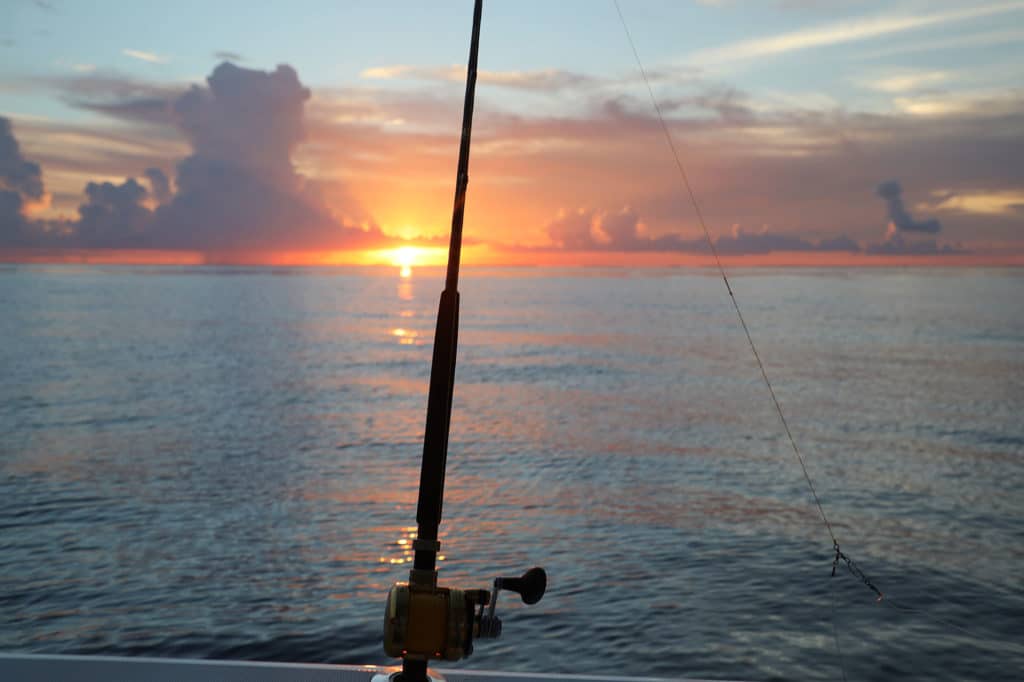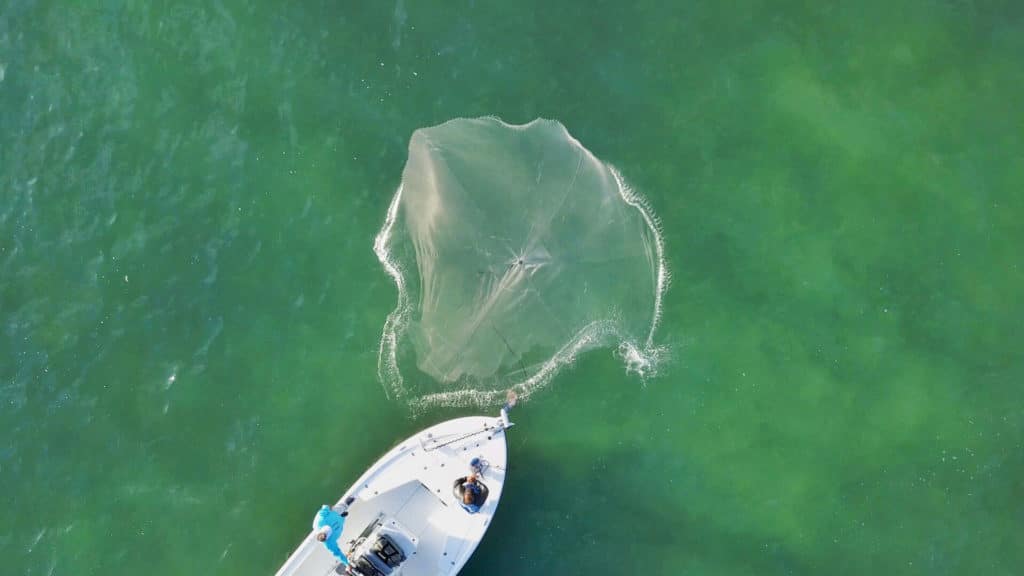
It is possible to predict the specific time window during which fish will feed. Certain tidal stages move fish around, making them more accessible. But what about going to a certain spot, inshore, nearshore or offshore, and predicting the bite within a 90-minute span—and doing it consistently throughout the season?
Numerous factors influence fish -feeding: tides, barometric pressure, wind, storms, water temperature and bait migration. One consistent marker is the solunar tables, which predict feeding times in a 24-hour cycle. Ignored by far too many anglers, those who follow the tables consistently catch fish.
Mechanics
Solunar tables predict four periods of feeding—two Major and two Minor—every 24 hourscorresponding to the moon’s position relative to Earth and, to a lesser degree, the sun’s. Major -periods, the longest, span 60 and 90 minutes. A Major occurs when the moon is overhead and again when it’s opposite (moon over and moon under). When the moon is midway between these two Majors, Minor activity blitzes materialize (moon up and moon down). These feedings are just as intense as those during Majors, only shorter in duration, often lasting between 30 and 45 minutes.
Wait, There’s More
While the moon over and moon under (-Major), and moon up and moon down (Minor) -periods heighten fish feeding, certain factors enhance their intensities. If a Major or Minor coincides with a sunrise or sunset, the bite can be off the charts. The same generally holds true as the moon is transitioning to full and also to its dark phase (new moon). In addition, when both a Major and Minor -occur during the same fishing day, there will be more opportunities to score. Planning a day’s fishing around the -tables certainly has merit.
Accurate? Usually
I began paying close attention to the solunar tables two decades ago, noting the results. Majors and Minors produced. I experienced a correlation between feeding upticks and catches during these phases; given the opportunity, I’ll plan fishing days offering the best prospects, according to the tables.
This past August, Bri Andrassy and I fished over several rock piles, west of Key West. Our first morning was slow. There was only one solunar period within our window, a Minor just after lunch. As we neared 1:30 p.m., the red grouper bite heated up, and we caught our fill. We then raced to a nearby wreck, where Andrassy scored a hefty permit and pulled the hook on another.
We pursued dolphin the next day, with a morning as slow as the previous one. Though we caught a few fish early, it took until around 2:30 p.m. for the birds—and dolphin—to -become active.
Did that Minor period factor in all this? It’s hard to dispute. I see it play out more times than not.
The Doctor’s Take
“I grew up in Miami and recall reading the solunar tables in the Miami Herald’s Outdoors page,” says Dr. Ray Waldner, professor of biology and associate dean of science at Palm Beach Atlantic University. “Those tables were in place for decades; if there wasn’t anything to them, they wouldn’t have lasted.
“I’ve experienced their influences countless times,” he says. “I’d be fishing on what was progressing to be a slow day, then around a solunar period, the fish would become active; it’s like -flipping a light switch. It’s not only marine life that responds to these tables, but all types of wildlife. I’m not sure how they work, but they certainly do. They’re consistent indicators of Major activity cycles. Pay attention to them, and you’ll catch more fish.”
The Tide In
There’s really no magic behind -solunar periods. In fact, they -parallel the -changing of the tides, which are times when -fishing activity generally picks up. The Major periods (moon over and moon under) occur during rising water, whereas Minor periods (moon up and moon down) occur during -falling tides.
Fishing by the solunar periods isn’t foolproof, nor do they keep time as -precisely as a Rolex. For example, tides are affected by the topography of the coast. Therefore, they can vary by 15 minutes or more at different spots along the same stretch of coastline. Naturally, solunar times could reflect this lag.

If a Minor period was slated for 11:30 a.m. in one area, for example, it may not -materialize until a half-hour or so later at a nearby location. The bottom line: Budget for a much broader solunar -window at your spots to compensate for the effects of tides.
Other forces that may alter the timing of peak periods include strong fronts, which can drive bait and gamefish from an area, excessive rains or dumping of fresh water into estuaries, -erratic -barometers associated with fronts and storms, or heavy angling pressure. However, under stable weather, peak solunar periods are often dead-on.
Offshore
Where deep water abuts land, a solunar period pulls blue water, currents and pelagics toward the structure. Conversely, water drawn seaward generates bait-rich color changes and rips. Solunar periods are key in cashing in on a hot wahoo bite, particularly in places like the Bahamas, where that 200- to 500-foot zone is so close to shore.
Solunar periods are just as effective offshore—in the canyons off the Northeast, mid-Atlantic and Gulf of Mexico, off Southern California’s Channel Islands and offshore waters, and Florida’s Gulf Stream—where tidal -influence is minimal at best.
This past May, Carl Grassi and I were offshore, some 35 miles from the Green Turtle Club in Abaco, the Bahamas, -fishing over deep canyons. On both days, we encountered and caught white -marlin under birds. The periods when we found the whites at the -surface -coincided with the Major – solunar phases.
What is the trigger that stimulates offshore gamefish into feeding? A fisheries biologist once told me that the pressure gradient from the moon’s -influence triggers feeding sprees -worldwide, even far offshore.
We’re Out There
We fish when we can, regardless of tides, moon phases and other influences. Yet successful charter captains, guides and anglers consult these tables for their Major and Minor times.
When a period nears, they position over a particular structure or other favorite spot, poised for the feeding they anticipate.
If you’re still on the fence over the -validity of the solunar tables, do yourself a favor: Take note of the Major and Minor periods, and try to be at one of your favorite spots when they occur. Or just note the times you catch fish that day, then consult the solunar tables -later for any correlation.
Keep this up for a season, and odds are you’ll become a firm believer in -fishing by the clock.









